Christie's announces a series of auctions, viewings, and events during Asia Week New York
NEW YORK, NY.- Christie’s announces Asian Art Week, a series of auctions, viewings, and events, from March 16-23. This season presents six distinct live auctions featuring approximately 650 lots spanning all epochs and categories of Asian Art from archaic bronzes through contemporary Indian painting. In addition to the dedicated category sales, this season includes two stand-alone auctions, The Classic Age of Chinese Ceramics - The Linyushanren Collection, Part III, the third auction of a sale series of superb Chinese Ming and Qing porcelains from the Song to early Ming dynasties from an important private Japanese collection, and The Studio of the Clear Garden: Chinese Ceramics and Works of Art, presenting a range of ceramics, jades, and lacquers from a private collection. Taking place concurrently are three online sales, Prints & Works on Paper by Zao Wou-Ki (March 15-23), featuring 47 prints and five drawings, and two sales from the successful Art of China series, The Art of China: New York, Spring Edition (March 20-27) and The Art of China: London, Spring Edition (March 20-28); collectively featuring nearly 200 lots.
This season’s highlights across Chinese painting and works of art include a Song-Yuan dynasty handscroll of Sixteen Arhats ($800,000-1,00,000); The Bernat Ding ‘Partridge Feather’ Bowl, A Highly Important Ding Russet-Splashed Black-Glazed Conical Bowl dating from the Northern Song dynasty (estimate on request) from the Linyushanren Collection; A Very Rare Huanghuali Six-Poster Canopy Bed, Jiazichuang 17th-18th century ($1,000,000-1,500,000); and A Rare and Exceptional Celadon-Glazed Relief-Decorated Bottle Vase, Qianlong seal mark in underglaze blue and of the period (1736-1795) ($800,000-1,200,000).
Indian, Himalayan and Southeast Asian highlights are led by A Large and Important Silver-Inlaid Gilt Bronze Figure of Buddha Shakyamuni, Tibet, circa 1400 ($1,000,000-2,000,000); A Black Stone Stele of Durga Mahishasuramardini, Northeast India, Pala period, late 10th/early 11th century ($800,000-1,200,000); bronzes from the Estate of Dr. George S. Heyer, Jr. (1930-2015), featuring A Gilt Bronze Figure of Vajrabhairava and Vajravetali, Tibet, 16th century ($150,000-250,000); and a group of Indian miniature paintings from the Estate of Stafford Elias, including rare illustrations of the Dvadasa Bhava, Mughal Court Artist at Allahabad, North India, 1600-1605. The South Asian Modern + Contemporary sale features masterpieces by modern Indian painters, led by Syed Haider Raza (1922-2016), Tapovan, painted in 1972 (estimate on request); Vasudeo S. Gaitonde (1924-2001), Untitled, painted in 1980 ($2,200,000-2,800,000); and Tyeb Mehta (1925-2009), Two Figures, painted in 1994 ($1,500,000-2,000,000).
ASIAN ART WEEK | LIVE AUCTION OVERVIEW:
Fine Chinese Paintings 20 March | 10am | New York
Christie’s sale of Fine Chinese Paintings features over 150 lots of classical, modern, and contemporary works. Leading the sale is a Song-Yuan dynasty handscroll of Sixteen Arhats ($800,000-1,00,000). Additional highlights include Qi Baishi (1863-1957), Flowers and Fruit ($250,000-350,000); works from the Private Collection of Luo Jialun, featuring a hanging scroll by Wang Fu (1362-1416), Mountainous Landscape, dated 1396 ($380,000-430,000); Cao Zhibai (1271-1355), Hill Along the Riverbank ($250,000-300,000); and Property from the Family Collection of General Joseph W. Stilwell. Featured in the sale is a fine selection of works by Zhang Daqian (1899-1983), including Bodhisattva ($300,000-400,000); Splashed-Ink Landscape ($200,000-300,000); and a selection of dinner menus from the collection of Min Chi Hsu, private chef for Zhang Daqian from 1977-1979.
Lot 30. Anonymous (13th-14th century), Sixteen Arhats. Handscroll, ink on paper, 12 3/8 x 352 in. (31.5 x 894 cm). Two collector’s seals of Zhao Mengfu (1254-1322). Frontispiece by Wang Jiqian (C. C. Wang, 1907-2003), signed with two seals and dated early summer, xinwei year (1991). Three detached colophons: one by Yong Kai Chiu (20th century) and Tsang Kao Mun (20th century), signed and dated early summer, 1970; one by Li Yuanmao (born 1944) and Wu Jialin (born 1927), signed and dated 4 April 2009. Estimate USD 800,000 - USD 1,000,000. Price realised USD 852,500. © Christie's Images Ltd 2018
Provenance: Lot 948, 30 May 2005, Fine Classical Chinese Paintings and Calligraphy, Christie’s Hong Kong.
Literature: Ming Pao Monthly Vol.9 No.5, Hong Kong Ming Pao Company Limited, Hong Kong, May 1974, pp.56-60.
Exhibited: Frank Caro Gallery, New York, 1974.
Hong Kong City Hall, Hong Kong, date unknown.
Note: Executed by an anonymous painter employing ink and line drawing technique, Sixteen Arhats illustrates the lives and preaching scenes of the sixteen lohans, the preservers of the teaching of Buddhism. In a well-plotted composition, each lohan and every element on the scroll was meticulously and vividly rendered in very fine and vigorous brushstrokes, which resulted in powerful and striking images. This handscroll has been generally regarded as a rare and important work by a great master of the Yuan dynasty or earlier. Some connoisseurs have even attributed it to the Song painter, Li Gonglin (1049-1106).
Sixteen Arhats has two collector’s seals of the Yuan master Zhao Mengfu (1254-1322). According to the Qing literature Pei Wen Zhai Shuhua Pu (Paintings and Calligraphy Register of Pei Wen Studio) compiled by Wang Yuanqi et al., there was a handscroll of Sixteen Arhats by Li Longmian (Li Gonglin) in the collection of Erya studio of Wang Shizhen of the Ming period. As stated in the detached colophons accompanying this painting, it was kept in Guangji Temple in Beijing for centuries until the early 20th century, when it came into the possession of the warlord Duan Qirui (1865-1936). Duan gifted this painting to his grand-daughter Duan Mei, wife of Dr. Tsang Chiu Tak (1900-1981), who migrated to Hong Kong in the 1940s. She then passed it to her brother-in-law, Dr. Tsang Chiu Sam(1901-?), who organized an exhibition with this painting at the Hong Kong City Hall.
In 1974, Sixteen Arhats was exhibited at Frank Caro Gallery in New York and was published in the May 1974 issue of Ming Pao Monthly in Hong Kong. In 1991 Wang Jiqian (C. C. Wang, 1907-2003) inscribed and signed the frontispiece of this handscroll. It was speculated that the anonymous colophon accompanying this work was also executed by Wang.
Sixteen Arhats has been a dear treasure of the current owner since 2005. It was featured in Guobao Dangan (File on National Treasures), an annual television program broadcasted by CCTV of China, on 8 and 9 November 2007.
Lot 65. Qi Baishi (1863-1957), Flowers and Fruit. Four scrolls, mounted and framed, ink and color on paper. Each measures 41 ½ x 13 ¾ in. (105.5 x 35 cm.). Each inscribed and signed, with a total of four seals of the artist. Dated yiyou year (1945). Estimate USD 250,000 - USD 350,000. Price realised USD 552,500. © Christie's Images Ltd 2018
Lot 15. Wang Fu (1362-1416), Mountainous Landscape. Hanging scroll, ink on paper, 56 5/8 x 12 5/8 in. (143.9 x 32.2 cm). Unsigned, with one seal of the artist. Two colophons, one by Wang Dashan (Ming dynasty), with one seal, datedbingzi year (1396); one by Tao Zhen (Ming dynasty), with one seal. Five collectors’ seals, including two of Pei Jingfu (1854-1924) and three of Chen Changji (1862-1908). Estimate USD 380,000 - USD 430,000. Price realised USD 552,500. © Christie's Images Ltd 2018
From the collection of Luo Jialun.
Literature: Pei Jingfu, Zhuangtaoge Shuhualu Vol. 3 (Paintings and Calligraphy in the Zhuangtao Studio), Taipei, Zhonghua Publishing, p. 548-550.
Qinghe Shuhuafang (Paintings and Calligraphy in the Qinhe Boat), in Qinding Siku Quanshu, juan 12.
Liuyanzhai Erbi, in Qingding Siku Quanshu, juan 3.
Yuding Peiwenzhai Shuhuapu, in Qinding Siku Quanshu, juan 86.
Note: Wang Fu was a prominent calligrapher and painter from Wuxi. In 1378, he entered government service in the capital of Nanjing. This monumental and impressive mountainous ink landscape painting was inscribed by his brother Wang Dashan in 1396, when the painter was back home in retirement, after years in exile in Datong. The inscription declares that “this painting is a combination of everything good”. The dense passage oscillates between descriptions of the painting itself, narrations of the moment in which the work was painted and praise of its creator. Despite its meanings, allusions and images being rich and plentiful, one aspect in particular is especially revealing: the passage gives the viewer an idea of the context in which the work was created and points to the larger reality which the scholar painter inhabited in the early days of the Ming dynasty.
Many of Wang Fu’s paintings were made for the artist’s hosts at banquets, parties or homestays and inscribed by other scholars who were present. Paintings of this kind, therefore, were inspired and shaped by the moment and the occasion in which they were made.
Lot 19. Cao Zhibai (1271-1355), Hill Along the Riverbank. Hanging scroll, ink on paper, 18 ¾ x 13 7/8 in (47.6 x 35.1 cm.) Inscribed with a poem and signed, with one seal of the artist. Six collectors’ seals. Titleslip inscribed, with one seal. Estimate USD 250,000 - USD 300,000. Unsold. © Christie's Images Ltd 2018
From the collection of Luo Jialun.
Note: Cao Zhibai, which can also be pronounced Cao Zhibo, was born into a distinguished Songjiang family in the final years of the Song dynasty and gained fame and wealth in his early years as a successful engineer of water-control projects. After a brief visit to the Yuan capital, Cao retired to his extensive estate and led the life of a retired literati. He frequently and generously entertained many like-minded friends, including Huang Gongwang and Ni Zan. In his day, he was very highly regarded and many of his extant paintings are dedicated to aristocrats.
Described as an heir of the Guo Xi-Li Cheng tradition, Cao Zhibai’s paintings are characterized by a number of distinguishing features: groups of natural elements, such as trees and rocks, with large dominant ones amidst smaller, encircling subordinates; a variety of types of brushwork, ink tones and thickness of contour lines: a strong sense of naturalism and detail; the absence of human figures; a cluster of trees in the central position; and a well defined spatial relationship with a zigzagging recession into space (Chu-tsing Li, “Rocks and Trees and the Art of Ts’ao Chih-po,” Artibus Asiae, vol. XXIII æ, 1960, pp. 153-208.
Lot 126. Zhang Daqian (1899-1983), Bodhisattva. Hanging scroll, ink, color, and vermillion on paper, 49 ½ x 25 ¼ in. (125.7 x 64 cm.) Inscribed and signed, with three seals of the artist. Dated spring, bingxu year (1946 ). Dedicated to Zhuzhai. Further inscribed by Pu Ru (1896-1963), with two seals. Estimate USD 300,000 - USD 400,000. Price realised USD 588,500. © Christie's Images Ltd 2018
Lot 123. Zhang Daqian (1899-1983), Splashed-Ink Landscape. Scroll, mounted and framed, ink and color on paper, 18¼ x 24¼ (46.5 x 61.5 cm). Inscribed and signed, with one seal of the artist. Estimate USD 200,000 - USD 300,000. Price realised USD 250,000. © Christie's Images Ltd 2018
South Asian Modern + Contemporary Art 21 March | 10am | New York
Christie’s sale of South Asian Modern + Contemporary Art presents 75 lots by modern and contemporary artists from the Indian Subcontinent. Leading the sale is a masterpiece by Syed Haider Raza, Tapovan, painted in 1972 (estimate on request), one of the most significant works in the artist’s oeuvre. Also featured is a seminal painting by Vasudeo S. Gaitonde (1924-2001), Untitled, painted in 1980 ($2,200,000-2,800,000); and Tyeb Mehta (1925-2009), Two Figures, painted in 1994 ($1,500,000-2,000,000). The auction additionally includes important works by Maqbool Fida Husain, Francis Newton Souza, Akbar Padamsee, Jehangir Sabavala, Bhupen Khakhar and Gaganendranath Tagore, along with a well curated selection of contemporary works by artists such as Subodh Gupta and Ranjani Shettar, both of whom have exhibitions opening at international museums in 2018. Featuring iconic works by top artists in the field, this season’s sale represents masterpieces across the category.
Lot 222. Syed Haider Raza (1922-2016), Tapovan, signed and dated 'Raza '72' (lower right); further signed, dated, inscribed and titled 'RAZA / 1972 / 160 X 189 cms. / "TAPOVAN" / Acrylic on Canvas' (on the reverse), acrylic on canvas, 62 7/8 x 74 3/8 in. (159.7 x 188.9 cm). Painted in 1972. Estimate On Request. © Christie’s Images Limited 2018.
Provenance: Private Collection, France
Sotheby's New York, 29 March 2006, lot 25
Acquired from the above by the present owner
Literature: A. Vajpeyi, Seven Contemporary Indian Artists, Paris, 2003, p. 163 (illustrated)
Lot 245. Vasudeo S. Gaitonde (1924-2001), Untitled, signed and dated 'V. S. GAITONDE, 1980' and signed in Hindi and dated '80' (on the reverse), oil on canvas, 53 7/8 x 34 7/8 in. (136.8 x 88.6 cm.) Painted in 1980. Estimate USD 2,200,000 - USD 2,800,000. © Christie’s Images Limited 2018.
Provenance: Pundole Art Gallery, Mumbai
Acquired from the above by the attaché of the Indo-German Chamber of Commerce in India during the 1980s
Christie's South Kensington, 10 June 2010, lot 237
Acquired from the above by the present owner
Literature: V.S. Gaitonde: Painting as Process, Painting as Life, exhibition catalogue, Munich, 2014, p. 100 (illustrated)
M. Menezes, Vasudeo Santu Gaitonde, Sonata of Solitude, Mumbai, 2016, p. 182 (illustrated)
Lot 209. Tyeb Mehta (1925-2009), Two Figures, signed and dated 'Tyeb 94' (on the reverse), acrylic on canvas, 59 1/8 x 35 3/8 in. (150.3 x 90 cm). Painted in 1994. Estimate USD 1,200,000 - USD 1,800,000. © Christie’s Images Limited 2018.
Provenance: Christie's New York, 16 September 2009, Lot 543
Acquired from the above by the present owner
Literature: Tyeb Mehta Paintings, exhibition catalogue, New Delhi, 1998 (illustrated, unpaginated)
R. Gandhi, Svaraj: A Journey with Tyeb Mehta's 'Shantiniketan Triptych,' New Delhi, 2002, p. 72 (illustrated)
R. Hoskote et.al., Tyeb Mehta: Ideas Images Exchanges, New Delhi, 2005, p. 190 (illustrated)
G. Sinha, Art and Visual Culture in India 1857-2007, Mumbai, 2009, back cover (illustrated)
Exhibited: New Delhi, Vadehra Art Gallery, Tyeb Mehta Paintings, 1998.
Indian, Himalayan and Southeast Asian Works of Art 21 March | 2pm | New York
Christie’s sale of Indian, Himalayan and Southeast Asian Works of Art will present over 50 carefully chosen lots featuring an array of fine bronzes and sculptures from Gandhara, India, the Himalayas, and Southeast Asia. The sale is led by A Large and Important Silver-Inlaid Gilt Bronze Figure of Buddha, Shakyamuni, Tibet, circa 1400 ($1,000,000-2,000,000). Other highlights include A Black Stone Stele of Durga Mahishasuramardini, Northeast India, Pala period, late 10th/early 11th century ($800,000-1,200,000); A Large Bronze Figure of Parvati, South India, Tamil Nadu, Vijayanagara Period, 14th/15th century ($250,000-350,000); and A Densatil Gilt Bronze Figure of Dorje Rabtenma, Tibet, Densatil Monastery, 15th century ($200,000-300,000). Also highlighting the sale is a selection of property from the Estate of Dr. George S. Heyer, Jr. (1930-2015), featuring A Gilt Bronze Figure of Vajrabhairava and Vajravetali, Tibet 16th century ($150,000-250,000); and a group of Indian miniature paintings from the Estate of Stafford Elias, including rare illustrations to the Dvadasa Bhava, Mughal Court Artist at Allahabad, North India, 1600-1605.
Lot 306. A Large and Important Silver-Inlaid Gilt Bronze Figure of Buddha Shakyamuni, Tibet, circa 1400; 16 1/8 in. (40.8 cm.) high. Estimate USD 1,000,000 - USD 2,000,000. Price realised USD 3,612,500. © Christie's Images Ltd 2018
Provenance: Hong Kong art market, 1990s.
Christie's New York, 21 March 2001, lot 78.
Literature: Himalayan Art Resource (himalayanart.org), item no. 24391
Note: This magnificent image of Shakyamuni Buddha, rare for its combination of both the fire gilding and silver inlay techniques, is an exemplar of Himalayan casting technique and sculptural style. The Buddha is seated in vajraparyankasana, the classical diamond posture, recalling the seminal moment when he attained enlightenment under the bodhi tree in Bodhgaya where the Mahabodhi Temple now stands. With his right hand, he touches the ground in the gesture of bhumisparshamudra, asking the earth to bear witness to the truth of his teachings. His elongated earlobes, weighed down by the heavy earrings of his former princely life, represent his rejection of worldly goods. His simple robe, stitched from a patchwork of scraps, leaves his right shoulder bare, the custom of Buddhist monks in South and Southeast Asia when paying respect to a venerated holy site.
The smooth surface retains a thick layer of gold, applied using mercury gilding, conveying his inner radiance. While mixed silver and gilt decorated figures were often found in the earlier bronze casting centers of North India, including during the Pala period, they are incredibly rare for this early period of Tibetan art. Such a technique requires masterful expertise, and this example embodies the virtuosity of the Tibetan bronze casters of the fourteenth and fifteenth centuries.
An almost identical silver-inlaid gilt-bronze figure of Buddha was sold at Christie’s Hong Kong on 31 May 2017, lot 2804 (fig 1). The Hong Kong example was lacking the separately-cast double-lotus base, which still exists with the present figure, but has short cylindrical pins below the knees, identical to those on the present figure, which help to secure the figure to the base. Apart from the missing base, and a turquoise-inlaid urna, which is now missing on the present figure, the two bronzes are indistinguishable in proportion and casting technique. The present work and the example from our Hong Kong sale are undoubtedly the product of the same workshop, and were likely produced around the same time, given the rarity and difficulty of the silver-inlay technique.
Fig. 1: A gilt-bronze and silver-inlaid seated figure of Buddha Shakyamuni, Tibet, 13th-14th century; 15¾ in. (40 cm.) high. Sold at Christie’s Hong Kong, 31 May 2017, lot 2804, for HK$50,940,000 (US$6,512,679). © Christie's Images Ltd 2017
Compare the above two figures with a related but smaller figure, originally in the Pan-Asian Collection and personal collection of Robert Hatfield Ellsworth and now in a private collection (fig. 2). The Ellsworth figure, despite depicting a crowned Buddha, is remarkably similar in terms of sculptural decoration and style. The figure is dressed in a patchwork robe, with raised beaded hems in both silver and gold, and with an incised leaf pattern similar to that of the present example. While the Ellsworth figure is predominantly silver, the exposed skin and face of the figure was originally covered in cold gold, creating a shimmering contrast between the silver and gold areas. The present figure and the Hong Kong example magnify that contrasting effect by eschewing the cold gold for luminous fire gilding. Apart from the Ellsworth example, few other works of Tibetan sculpture combine silver and gilt decoration so successfully.
Fig. 2: A silver fgure of Buddha Shakyamuni, Tibet, 13th century. Private collection, formerly the Pan-Asian Collection and collection of Robert Hatfeld Ellsworth. Image courtesy of Carlton Rochell, New York.
The present figure, the Hong Kong bronze, and the Ellsworth example share the same pinched waist, muscular upper body, and serene facial expression that reveal the influence of the Nepalese sculptural style. Indeed, the Nepalese style was prevalent throughout much of the Himalayas in the thirteenth and fourteenth centuries, and in particular the central regions of Tibet, from which the present figure originates. The Newaris, the traditional inhabitants of the Kathmandu Valley, were the master bronze casters of the period, and their services were patronized far and wide, including at the imperial workshops of the Yuan dynasty in Beijing. While the present figure exudes characteristics of Nepalese sculpture, the gilding and the tone of the bronze beneath identify this as a masterpiece made in Tibet.
Lot 317. A Black Stone Stele of Durga Mahishasuramardini, Northeast India, Pala period, late 10th-early 11th century; 51 ½ in. (131 cm.) high. Estimate USD 800,000 - USD 1,200,000. Price realised USD 912,500. © Christie's Images Ltd 2018
Provenance: Private collection, Germany, since 1970, by repute.
Consigned to Spink & Son, London, in July 1986.
New York art market.
Acquired by the present owner from the above on 2 January 2007.
Note: Durga puja or the festival of Durga’s victory of good over evil, is one of the most celebrated festivals in eastern India. In Bengal, Durga is considered the daughter of every home and the festivities celebrate her return to her parents with her children, where for five days she is adored, worshipped and celebrated. The festival marks the battle between Durga and the powerful buffalo demon Mahishasura. A pious devotee of Brahma, Mahishasura was rewarded with a boon that no man or god would be able to conquer him. Thus invincible, he battled the gods and took over the heavens. The gods appealed to the goddess Parvati, who agreed to harness the shakti of all female celestial beings and create Durga, who is bestowed with all the weapons from the gods and a lion for her vehicle. After nine days of battle, Durga vanquished Mahishasura and his army and restored the heavens to the gods.
The worship of a mother goddess as the source of life and fertility has ancient roots, but the text Devi Mahatmya (Glory of the Goddess), composed during the fifth and sixth centuries, led to the dramatic transformation of the female principle into a goddess of great cosmic power. Later, textual sources generally refer to this form of Durga as Mahishasuramardini. She remains the most important and popular form of the goddess, also referred to as Devi or Shakti.
The present sculpture of Mahishasuramardini is a brilliant and a very important example of Brahmanical sculpture from the Pala period. Between the eighth and the twelfth centuries, the regions of Bihar and Bengal (presently Bangladesh and India) were politically and culturally unified under the reign of the Pala kings. Stone sculptures from these regions are of grey or black schist and it is believed that the grey stone originates in the Gaya region of Bihar and the black and more dense stone is found primarily in the eastern Bihar and Bengal.
The origin of the Pala school of sculpture can be traced to various stylistic sources, including Mathura-Kusana prototypes from the early centuries of the Common Era to the late fifth century Gupta idiom of Sarnath and related sites. Some of the earliest known depictions of Mahishasuramardini are small stone images from Mathura where the goddess is seen killing the buffalo demon or standing peacefully with sun and moon on either side, indicating her presiding over day and night. Other earlier examples are from the entrance to caves 6 and 17 at Udayagiri in Madhya Pradesh from the fourth to fifth centuries and from Aphsad in the seventh century. According to Claudine Buatze-Picron in her discussion on the Hindu images from this region, “As a close study of some of the forms reveals, the [iconographiy] was not for once and ever fixed but underwent transformations in the course of time; starting in Bihar, the movement reached it apex in north Bengal from the 10th century onwards (Claudine Bautze-Picron and Gouriswar Bhattacharya. The Art of Eastern India: In the Collection of the Museum Fu¨r Indische Kunst, Berlin: Stone & Terracotta Sculptures, D. Reimer, 1998, p. 12).
Bautze-Picron, in her lecture Durga, The All Powerful in Eastern India (The Annual Lecture on the Arts of South and Southeast Asia, The Metropolitan Museum of Art, 5 March 2017), identifies various motifs and compositional choices seen in ninth and early tenth century examples of Mahishasuramardini from the region. She cites examples such as the style of garland belt worn by Durga, her sensuous belly fold and large hair bun, the lion playfully nipping at the back of the buffalo, the chakra lodged in the body of the buffalo, and the demon emerging from the beheaded beast, all attributes stylistically forming part of the ninth and early tenth century repertoire. By the late tenth and eleventh century, the rounded hair bun of Durga is replaced by the jata, and the overall compositions become more elaborate with attendant figures and various gods who watch the battle scene unfold between Durga and Mahisha. Later examples show Durga with twelve arms, unlike earlier examples with eight and ten; her lion mount becomes smaller and Mahishasura larger, taking a more central position under the Devi.
The present sculpture depicts the final moments of the duel between Durga and Mahishasura. The execution and scale of the piece are indicative of her importance as a central figure of worship. Carved in deep relief, the sculpture is rendered almost fully in the round. The hardness of the stone lends itself to the extraordinarily fine carving and intricately detailed jewelry. The significant size of the sculpture also allows for greater iconographic embellishment around the central figure. Durga stands in pratyalidhasana, with one leg planted on the beast’s back, and the other extended over her lion mount. Her full and supple body leans forward, adding a sense of movement and immediacy to the whole composition. Her waist and limbs are slender, while her breasts are firm and round. The buffalo demon lies beheaded at Durga’s feet with the chakra still lodged in its body, with Mahishasura emerging in his anthropomorphic form from the slain animal. Her array of arms brandishing weapons connotes her many powers, while the pronounced musculature of her stomach reveals the tension in her body. As she braces her foot against the back of the dead beast and raises her sword to dispatch the final blow, she uses her divine strength to plunge the trisula into Mahisha while her lion bites the rear of the slain buffalo. Eyes wide with intensity, Durga has a smile that lends sweetness to her otherwise wrathful appearance. Her facial features may be compared to an example from the Museum Für Indische Kunst, Berlin, which Bautze-Picron compares to images from South Bihar, “i.e., the front is very narrow, the eye-brows are extremely curved and form a high arc above the eye, the mouth is small with the lips going up at their extremities, the chin is pointed, the nose […] pointed and the nostrils are indicated through well incised round lines…” (Bautze-Pircron, pg. 92). While the Berlin example has a jata for its hair, the facial features of this sculpture and those of the present work are very similar. However, the overall composition and execution of the present sculpture is far more elaborate, sophisticated and ornate than those of the comparable sculpture.
To visualize the stylistic development of Mahishasuramardini in Bihar, compare the present work with a ninth century example from the Metropolitan Museum of Art (Goddess Durga Slaying the Demon Mahisha, second half of the 9th century, Eastern India, Bihar, probably Gaya district, Schist, Accession Number: 2016.650). Their shared similarities include crowns with a triple diadem, the center projection rising up in a triangulated form above a large topknot of hair. In addition, both display detailed and beautiful ornaments including elaborate jeweled belts. In both examples, she holds a shield, a sword, the noose with which she binds Mahisha, a long bow with an elaborate handgrip, an arrow and a quiver. However, in the current work, one can also see the stylistic evolution into a composition that has gained complexity, such as the inclusion of an attendant figure holding a peacock fan, and various gods and apsarasabove overseeing the battle. The lotus base is beautifully carved with fully articulated petals and is held up by devotees and dancing figures including Chamunda. It is an archetypal example of the triumph of good over evil and one of the finest images of Brahmanical sculpture from the Pala period to come to the market.
A large and important black stone fgure of Lokanatha Avalokiteshvara, Northeastern India, Pala Period, 12th century; 58 in. (147.4 cm) high. Sold at Christie’s New York, 15 March 2017, lot 233, for $24,663,500. © Christie's Images Ltd 2017
Goddess Durga Slaying the Demon Mahisha, second half of the 9th century, Eastern India, Bihar, probably Gaya district. Schist. H. incl. base 42 1/2 in. (108 cm); H. 39 in. (99.1 cm); W. 21 in. (53.3 cm); D. 7 in. (17.8 cm). Base: H. 3 1/2 in. (8.9 cm); W. 22 1/2 in. (57.2 cm); D. 8 1/2 in. (21.6 cm). Purchase, Blanca and Sunil Hirani Gift, in honor of Sunita and Gordhan Hirani, 2016; Accession Number: 2016.650. © 2000–2018 The Metropolitan Museum of Art.
Claudine Bautze-Picron and Gouriswar Bhattacharya. The Art of Eastern India: In the Collection of the Museum Für Indische Kunst, Berlin: Stone & Terracotta Sculptures, D. Reimer, 1998, p. 246, pl. 254.
Lot 321. A Large Bronze Figure of Parvati, South India, Tamil Nadu, Vijayanagara Period, 14th-15th century; 27 ½ in. (70 cm.) high. Estimate USD 250,000 - USD 350,000. Price realised USD 300,000. © Christie's Images Ltd 2018.
Provenance: Christian Humann (d.1981), Pan-Asian Collection, New York, by 1972.
Collection of Robert H. Ellsworth, New York, acquired by 1982.
Christie's New York, 17 September 2003, lot 41.
Exhibited: On loan to the Los Angeles County Museum of Art, 1972-1982 (L.72.23.6).
On loan to the Denver Art Museum, 1981 (61.1981).
Note: Following the demise of the Chola empire towards the end of the thirteenth century, the Vijayanagara empire became the inheritors of the former’s great sculptural and architectural traditions. By the fifteenth century, the sprawling capital city of the same name was by various accounts one of the most populous and wealthy cities in Asia. Sculpturally, the artisans of the Vijayanagara borrowed heavily from the Chola style, but also established their own precedents. The idealized naturalism of the Chola period was slowly transformed into a more stylized aesthetic with a greater emphasis on dynamism and musculature. Such mannered features can be found in the present sculpture in the exaggerated sway of the tribhangapose, the sharp ridge of the shins, the full hips and breasts, and the tall, almost conical headdress.
The current figure is the mate to the important bronze figure of Shiva Chandrashekhara from The Collection of Robert Hatfield Ellsworth, sold at Christie’s New York, 17 March 2015, lot 34 (fig. 1). The two works were on loan together at the Los Angeles County Museum of Art from the esteemed collector, Christian Humann, from 1972 until his death in 1981, when Robert Ellsworth purchased them and hundreds of other sculptures and paintings that made up the renowned Pan-Asian Collection.
An important bronze figure of Shiva Chandrashekhara, South India, Tamil Nadu, Vijayanagara period, 15th Century, from The Collection of Robert Hatfield Ellsworth; 34 ½ in. (85.6 cm.) high. Sold at Christie’s New York, 17 March 2015, lot 34, for $665,000. © Christie's Images Ltd 2015.
The Shiva Chandrashekhara and the Parvati are clearly the work of the same workshop and period. The elongated oval face, with angular nose and almond-shaped eyes, surmounted by a particularly tall chignon of hair is shared by both figures. Similarly, the treatment of the multiple belts of each figure, with rounded and rectangular plaques at the front, including one strand that stretches across the front of the thighs, is almost identical. Both figures also share an elongated and particularly waisted double-lotus base over the square plinth, with similarly incised lotus petals. The Shiva figure is taller by about seven inches, which can be accounted for by the swayed posture of the Parvati figure and the slight dimorphism between male and female bronze images from South India. Both figures also share dark patinas.
Few other Vijayangara Parvati figures of this magnitude are known: a highly important and large bronze figure of Parvati, slightly taller than the present work and once on view at The Metropolitan Museum of Art, was sold at Christie’s New York, 21 March 2007, lot 257. Another figure, of similar size and with the same unusual looped earrings, was sold at Christie’s New York, 23 September 2004, lot 48. Two other comparable works, but of later date, reside in the Tanjavur Art Gallery, Tanjavur and at the National Gallery of India, New Delhi, illustrated by C. Sivaramamurti in South Indian Bronzes, New Delhi, 1963, figs. 80a and 80b.
Lot 309. A Densatil Gilt Bronze Figure of Dorje Rabtenma, Tibet, Densatil Monastery, 15th century; 15 7/8 in. (40.5 cm.) high. Estimate USD 200,000 - USD 300,000. Unsold. © Christie's Images Ltd 2018.
Provenance: Private collection, Italy, circa 1991.
Christie's New York, 21 September 2007, lot 125.
Literature: Himalayan Art Resource (himalayanart.org), item no. 22150
Note: The eight tashi gomang stupas of Densatil, a Kagyu monastery located southeast of Lhasa, were by all accounts the most astounding in all of Tibet. Densatil was founded in 1158 by Phakmodrupa Dorje Gyelpo (an esteemed lama closely connected to the Tibetan saint Milarepa through his Guru Gampopa) who established the monastery upon the site of his humble meditation hut. The main building's tashi gomang chorten (or “stupa of many auspicious doors”) was an enormous display of the whole pantheon of Tibetan Buddhist deities, expertly crafted by the finest Newar artists and local craftsmen. Tibetan textual sources tell us that these lavishly decorated stupas were erected during a period of expansion from the late fourteenth to early sixteenth centuries. Tragically destroyed in the second half of the twentieth century, all that remains now are the few photographs taken by Francesco P. Mele (who visited the site with the famed Tibetologist Guiseppe Tucci in 1948) and a small group of salvaged fragments which have been preserved in private collections and museums.
The present example is a finely cast and superbly decorated figure of the protectress, Dorje Rabtenma, which once sat on the lowest of the stupa’ssix tiers, among the host of other guardian deities. A fixture on the verso reveals how it would have been attached to the base of the structure. Dorje Rabtenma, an emanation of the protectress of Tibet, Palden Lhamo (or “glorious goddess”), repels the uninitiated with her fierce countenance, her garland of severed heads, and the flayed human skin that sits upon the mule she rides. She cuts through ignorance with her flaming sword. A snow lion’s head emerges out of her gold earring, just below, and a nagafrom her other earring. Her jewel-spitting mongoose symbolizes the good fortune she can bring to those who supplicate her.
Additional examples of Densatil bronzes can be found in Olaf Czaja’s Golden Visions of Densatil, published to accompany the Asia Society exhibition of the same name. For further comparison see a Densatil gilt-bronze frieze with goddesses sold at Christie's New York, 13 September 2017, lot 626, as well as a Densatil gilt-bronze figure of Nagaraja also sold at Christie’s New York on 19 March 2014, lot 1016.
Illustration created by Olaf Czaja and modifed by Asia Society. Reprinted with permission of Olaf Czaja.
A gilt bronze fgure of a Nagaraja, Tibet, Densatil style, 15th century; 16 in. (40.6 cm.) high. Sold at Christie’s New York, 19 March 2014, lot 1016, for $617,000. © Christie's Images Ltd 2014
A Densatil gilt bronze frieze with ofering goddesses, Tibet, 14th/15th century; 12 ¾ in. (32.3 cm.) high. Sold at Christie’s New York, 13 September 2017, lot 626, for $396,500. © Christie's Images Ltd 2017
Lot 303. A Gilt Bronze Figure of Vajrabhairava and Vajravetali, Tibet, 16th century; 9¡ in. (24 cm.) high. Estimate USD 150,000 - USD 250,000. Unsold. © Christie's Images Ltd 2018
Provenance: Sotheby's New York, 23 March 1995, lot 53.
New York art market.
Acquired by George S. Heyer from the above on 2 April 2005; thence by descent.
Dr. George S. Heyer, Jr. (1930-2015)
A well-respected patron of the arts and a scholar of Christian theology, Dr. George S. Heyer Jr. led a life characterized by his deep interest in, and love of, art. His passion and knowledge were expressed not only through his art collection, but also by his service as Chairman of the Texas State Commission on the Arts and Humanities, Chairman of the Advisory Council for the College of Fine Arts at the University of Texas, Austin, and as a longstanding Trustee of the Museum of Fine Arts, Houston. Dr. Heyer also served as a devoted member of the Museum Collections Committee for decades.
In graduate school, Dr. Heyer began collecting pieces that would eventually become the collection he is best known for publicly - one of the world's great small-scale collections of fine English silver produced between 1660 and 1760, which included the famous “Ely Ewer” by Paul de Lamerie. While he befriended and was well known to silver dealers in New York and London, it was legendary dealer Eric Shrubsole’s friendship and guidance that proved indispensable to Dr. Heyer over the decades that it took to assemble the collection. This collection has been bequeathed to the Museum of Fine Arts, Houston.
A voracious and passionate reader, Dr. Heyer loved the process of learning about, and then collecting, art across various categories, with his collection eventually encompassing Old Master drawings and paintings, Impressionist and Contemporary art. Coupled with his love of travel, Dr. Heyer developed lifelong friendships with some of the top art dealers in the world, whom he would see either in their shops or on his routine trips to international art fairs in New York, London and Maastricht. It was likely an art tour he and his wife took to China in the late 1970s, a trip very few Americans made at the time, that sowed the seeds for the final collection he assembled -- early artworks from China, India, Southeast Asia and the Himalayas. Over the years, many scholars have commented on how rare it is to see a collection with such breadth across various cultures, periods, and mediums, that also reflects a deep understanding of, and discerning eye for, pieces that express the true beauty of a particular art form.
Dr. Heyer’s efforts as a patron were unmistakably concentrated on his home state of Texas, where his family had well-established roots. His great uncle was Earnest Nalle, who built the foundation for the Paramount Theater in Austin in 1915. The gymnasium at the University of Texas at Austin was named after his grandfather, Thomas Watt Gregory, U.S. Attorney General under Woodrow Wilson. Dr. Heyer received a bachelor’s degree in religion at Princeton in 1952, a bachelor’s of divinity from Yale in 1956, and a PhD in religious studies from Yale in 1963. Dr. Heyer returned to Texas to serve as a minister at the First Presbyterian Church in San Angelo prior to pursuing his doctorate and later, to teach the history of Christian doctrine at Austin Presbyterian Theological Seminary, where he worked from 1964 to 1993.
A true gentleman and connoisseur, Christie’s is honored to offer a selection of works from the collection of Dr. George S. Heyer, Jr.
Literature: Himalayan Art Resource (himalayanart.org), item no. 24389
Note: This dynamic gilt bronze figure depicts the ferocious couple Vajrabhairava and Vajravetali in sexual union, symbolizing the dualistic totality encompassing compassion, embodied by the male and wisdom, associated with the female. Eight of Vajrabhairava’s nine faces display bulging eyes and bared fangs emblematic of his wrathful nature. In his hands he holds various tantric weapons that enable him to conquer death, including a curved knife and skullcup at center. Vajravetali wraps her leg around her partner’s waist and tilts her head back to meet his gaze. The two figures bear perfectly cast and expertly painted wrathful expressions, which aptly convey their power. Typically hidden by an attached repoussé flayed elephant skin, here the sculptor has cast the elephant skin with an open center onto the verso of Vajrabhairava, providing a unique view of the goddess’s foot and the god’s muscular back.
This particular form of Vajrabhairava is a wrathful emanation of Manjushri, the Bodhisattva of Perfect Wisdom. The host of animals and Hindu deities he tramples under his many legs represent ignorance and human ego, and his posture demonstrates the enlightened activity he embodies. Compare with a very similar gilt bronze figure of Vajrabhairava and Vajravetali from the Sporer Collection sold by Christie's New York 15 September 2015.
A gilt bronze fgure of Vajrabhairava and Vajravetali, Tibet, 16th century; 10 7/8 in. (27.8 cm.) high. Sold at Christie’s New York, 15 September 2015, lot 18, for $989,000. © Christie's Images Ltd 2015
The Classic Age of Chinese Ceramics - The Linyushanren Collection, Part III 22 March | 10am | New York
The Classic Age of Chinese Ceramics - The Linyushanren Collection, Part III will present over 40 outstanding ceramics dating from the Northern Song dynasty (960-1127) to the Yuan/early Ming period (14th-15th century). Carefully assembled by a distinguished Japanese collector, The Linyushanren Collection was formed with a focus on exquisite ceramics created mainly during the Song dynasty (AD 960-1279). The top lot of the sale is The Bernat Ding ‘Partridge Feather’ Bowl, A Highly Important Ding Russet-Splashed Black-Glazed Conical Bowl dating from the Northern Song dynasty (estimate on request), formerly in the world-renowned collections of Eugene Bernat and the Manno Art Museum, Osaka. This legendary bowl has been exhibited at major museums and is widely published. Additional highlights include A Superb and Very Rare Carved Ding ‘Peony’ Dish dating to the Northern Song-Jin dynasty ($400,000-600,000), and A Very Rare and Important Painted Cizhou ‘Fish’ Truncated Meiping also dating from the Northern Song-Jin Dynasty ($500,000-600,000).
Lot 506. A highly important Ding russet-splashed black-glazed conical bowl, Northern Song dynasty (960-1127); 7 ½ in. (19 cm.) diam. Estimate On Request. Price realised USD 4,212,500. © Christie's Images Ltd 2018
Cf. my post: A highly important Ding russet-splashed black-glazed conical bowl, Northern Song dynasty (960-1127)
Lot 504. A superb and very rare carved Ding 'Peony' dish, Northern Song-Jin dynasty (960-1234); 10 ¼ in. (26 cm.) diam. Estimate USD 400,000 - USD 600,000. Price realised USD 948,500. © Christie's Images Ltd 2018
Cf. my post: A superb and very rare carved Ding 'Peony' dish, Northern Song-Jin dynasty (960-1234)
Lot 513. A very rare and important pained Cizhou 'Fish' truncated meiping, Northern Song-Jin dynasty (960-1234); 9 7/8 in. (25.1 cm.) high. Estimate USD 500,000 - USD 700,000. Price realised USD 1,752,500. © Christie's Images Ltd 2018
Cf. my post: Inspirational Ceramics: Cizhou Wares From The Linyushanren Collection
The Studio of the Clear Garden: Chinese Ceramics and Works of Art 22 March | 11:30 | New York
The Studio of the Clear Garden: Chinese Ceramics and Works of Art includes 37 lots from a private collection spanning Ming and Qing porcelains, superb lacquerware, and fine jade carvings. Highlights include A Rare Large Ming-Style Blue and White Reverse-Decorated ‘Dragon’ Meiping, 18th century ($150,000-200,000); A Teadust-Glazed Vase, Fanghu, Qianlong incised six-character seal mark and of the period (1736-1795) ($120,000-180,000); A Very Rare and Superbly Carved Imperial Polychrome Lacquer Rectangular Tray, Qianlong incised six-character mark in a line and of the period (1736-1795) ($120,000-180,000); and A Superb Well-Carved Spinach Green Jade Circular Table Screen, Qianlong period (1736-1795) ($100,000-150,000).
Lot 604. A Rare Large Ming-Style Blue and White Reverse-Decorated ‘Dragon’ Meiping, 18th century; 14 ½ in. (36.8 cm.) high. Estimate USD 150,000 - USD 200,000. Price realised USD 732,500. © Christie’s Images Limited 2018.
The heavily potted meiping is decorated in the Ming style with a five-clawed dragon striding amidst clouds and flames in pursuit of a flaming pearl above a band of wind-tossed waves, all carved under the clear glaze and reserved in white against the intense cobalt-blue ground applied with simulated 'heaping and piling'.
Provenance: Christie's London, 4 June 1973, lot 107.
Christie's London, 7 November 2006, lot 193.
The Studio of the Clear Garden.
Note: A closely related meiping of comparable height (36.1cm.) in the Asian Art Museum of San Francisco is published by René Lefebvre d'Argencé in Chinese Ceramics in the Avery Brundage Collection, p. 114, pl. LII C, where it is dated Ming dynasty, 16th century. This meiping was later published by He Li in Chinese Ceramics A New Comprehensive Survey, San Francisco, 1996, pp. 290-91, no. 592, where it is re-dated to the Yongzheng period.
The white areas of the Asian Art Museum meiping have a network of crackling which may have occurred during its rapid cooling after the firing process. The same crackling also occurs on a similar reserve-decorated vase of this form in the National Palace Museum, Taipei, illustrated in Blue-and-white Ware of the Ming Dynasty, Book I, p. 64, pl. 12. Although originally catalogued as early Ming, it most probably also dates to the early Qing period. The Taiwan example is discussed by Soame Jenyns, T.O.C.S., vol. 31, 1957-59, 'Visit to Pie-kou, Taiwan', p. 56, pl. 15a.
The present meiping and the two other similar examples are clearly based on Yongle prototypes such as the similarly decorated vase, and of slightly different shape illustrated in the Chang Foundation exhibition catalogue, Imperial Hongwu and Yongle Porcelain Excavated at Jingdezhen, Taipei, 1996, no. 66. On this excavated Yongle-period meiping, the body of the dragon is also carved under the clear glaze and is shown against a rich blue ground of breaking waves bordered above and below by bands of petal lappets. On the later Yongzheng meiping, the blue wave ground has become more of a dark blue wash and the breaking waves are confined to a band at the bottom.
Lot 609. A Teadust-Glazed Vase, Fanghu, Qianlong incised six-character seal mark and of the period (1736-1795); 2 in. (30.5 cm.) high. Estimate USD 120,000 - USD 180,000. Price realised USD 125,000. © Christie’s Images Limited 2018.
Of faceted pear shape, the vase is molded in low relief on the two broad sides with large peach-shaped panels and the neck with indented corners is flanked by a pair of rectangular lug handles. The vase is covered overall in an even olive-green glaze with fine gold speckling which also covers the base surrounding the mark which is covered with a brown glaze, and the foot is covered with a blackish-brown wash.
Provenance: Sotheby's Hong Kong, 10 April 2006, lot 1631.
The Studio of the Clear Garden.
Note: During the Qianlong period, vases of this shape were made with various monochrome glazes. Some of the other monochrome glazes include a Ge-type glaze, as seen on a vase illustrated in Chinese Ceramics in the Idemitsu Collection, Japan, 1987, no. 960; a flambé glaze found on two vases sold at Christie's Hong Kong, 29 May 2013, lot 2279 and 1 June 2011, lot 3716; and a Ru-type glaze on a larger vase (16 ½ in. high), also sold at Christie's Hong Kong, 31 May 2017, lot 3203. A teadust-glazed vase of this form and of comparable size (12 1/8 in. high) sold at Christie's Hong Kong, 1 June 2011, lot 3708.
Lot 634. A Very Rare and Superbly Carved Imperial Polychrome Lacquer Rectangular Tray, Qianlong incised six-character mark in a line and of the period (1736-1795); 8 ½ in. (21.5 cm.) long. Estimate USD 120,000 - USD 180,000. Price realised USD 137,500. © Christie’s Images Limited 2018.
The tray is finely carved through the red, green and yellow layers with a central Chun character superimposed with a medallion of Shoulao flanked by two five-clawed dragons amidst clouds and flames above the multi-colored rays radiating from a basket filled with the bajixiang (Eight Buddhist Emblems), all below four finely detailed figural panels and babaoon the shallow, gently everted sides, which are decorated on the exterior with lingzhi scroll and green bamboo leaves. The base is inscribed with the reign mark in a line above a four-character inscription, Chunshou Baopan ('Eternal Spring Dish') cloth box with inscription.
Provenance: Christie's Hong Kong, 25 October 1993, lot 513.
Hugh Moss.
Christie's Hong Kong, 27 May 2008, lot 1560.
The Studio of the Clear Garden.
Note: The decoration on this rare tray is more usually found on Qianlong lacquer boxes of varying size, the large central chun (spring) character indicating that they were made for birthday celebrations or were commissioned by the Emperor to be given away on the occasion of a birthday. A gift of a pair of these boxes as well as a pair of the more rare trays with the chun design was presented to King George III by the Qianlong Emperor, following Lord Macartney's Embassy of 1792-4. Those boxes and trays are in the Royal Collection, and one of each is illustrated by J. Ayers in Chinese and Japanese Works of Art in the Collection of Her Majesty The Queen, vol. III, London, 2017, p. 849 (one of the boxes), and p. 855 ( one of the trays). The trays have not only the same decoration, but also the same combination of reign mark and inscription, Chunshou Baopan found on the boxes. One of the trays is also illustrated by Ming Wilson in 'Gifts from Emperor Qianlong to King George III', Arts of Asia, January-February 2017, p. 38, fig. 7 (upper left).
Other Qianlong lacquer boxes of this design include the example in the Palace Museum, Beijing, illustrated in The Complete Collection of Treasures of the Palace Museum - 46 - Lacquer Wares of the Qing Dynasty, Hong Kong, 2006, p. 88, pl. 61; one from the National Palace Museum, Taipei, included in the Special Exhibition of Palace Lacquer Objects, Taipei, 1981, no. 67; one from the Avery Brundage Collection illustrated by Sir Harry Garner, Chinese Lacquer, London, 1979, pl. 148, fig. 90; and one from the Manno Art Museum sold at Christie's Hong Kong, 28 October 2002, lot 568 and again at Sotheby's Hong Kong, 11 April 2008, lot 2863.
The design found on the Qianlong trays and the boxes is based on prototypes from the reign of the Ming dynasty Emperor, Jiajing(1522-1566). One in the Palace Museum, Beijing, is illustrated in The Complete Collection of Treasures of the Palace Museum - 45 - Lacquer Wares of the Yuan and Ming Dynasties, Hong Kong, 2006, p. 176, pl. 134; another in the Palace Museum, Taipei, is illustrated op. cit., Special Exhibition of Palace Lacquer Objects, no. 37. It appears that the Qianlong examples were specifically commissioned to emulate not only the design of the earlier Ming wares but also their quality and multi-colored palette.
Lot 625. A Superb Well-Carved Spinach Green Jade Circular Table Screen, Qianlong period (1736-1795); 8 ½ in. (21.7 cm.) diam. Estimate USD 100,000 - USD 150,000. Price realised USD 112,500. © Christie’s Images Limited 2018.
One side is well carved in high relief with a scene of Xiwangmu seated on a phoenix and holding a peach accompanied by an attendant holding a fan as she descends amidst clouds from heavenly pavilions towards the immortal Shoulao accompanied by an attendant holding a staff hung with a double gourd who stands amidst trees below to welcome her. The reverse is carved with a pavilion and two deer in a landscape setting withlingzhi growing in the foreground. The stone is of rich mottled dark green color, zitan and hongmu wood stand.
Provenance: Collection of Sir John William Buchanan-Jardine, 3rd Baronet of Castle Milk (1900-1969).
Spink & Son, Ltd., London, 30 June 1959.
Private Collection, England: Bonham's Hong Kong, 4 December 2008, lot 204.
The Studio of the Clear Garden.
Fine Chinese Ceramics and Works of Art 22 March at 2pm | 23 March at 10am & 2pm | New York
Fine Chinese Ceramics and Works of Art will be held on March 22-23 across three sessions and comprises approximately 290 lots, representing works from a variety of collecting categories, including early ritual bronze vessels, a range of ceramics, jades, and works of art. Highlights include A Very Rare Huanghuali SixPoster Canopy Bed, Jiazichuang 17th-18th century ($1,000,000-1,500,000); A Pair of Superb and Very Rare Huanghuali Square-Corner Cabinets, Late Ming dynasty, 18th Century ($800,000-1,200,000); A Rare and Exceptional Celadon-Glazed Relief-Decorated Bottle Vase, Qianlong seal mark in underglaze blue and of the period (1736-1795) ($800,000-1,200,000); and A Rare Sancai-Glazed Figure of a Camel and Groom, Tang dynasty (618-907 AD) ($300,000-400,000).
Lot 952. A Very Rare Huanghuali Six-Poster Canopy Bed, Jiazichuang, 17th-18th century; 87 in. (221 cm.) high, 89 in. (226 cm.) wide, 62 in. (157.5 cm.) deep. Estimate Price realised USD 1,932,500. © Christie’s Images Limited 2018.
The thick, molded rectangular frame is set with a three-panel hard-board platform above the narrow waist and plain beaded aprons, and supported on beaded legs of rectangular section terminating in hoof feet. The four corner posts and two front posts are joined on the three sides and part of the front with a lattice-work railing composed of a row of shaped chilongmedallions alternating with stylized ruyi struts below a narrow band of shaped oval struts. The posts are joined at the top by pierced panels of confronted chilong among lingzhi scroll at the front and panels of pierced medallions at the sides and back. The front posts are joined beneath the openwork panels by horizontal stretchers with phoenix-head terminals and ruyi-head struts.
Property from the Raymond Hung Collection
Literature: R. H. Ellsworth, Chinese Furniture: One Hundred and Three Examples from the Mimi and Raymond Hung Collection, vol. 2, Hong Kong, New York, 2005, pp. 106-107, no. 48.
Note: In the traditional Chinese domestic setting, the bed is among the most important pieces of furniture. Its large size meant that it would dominate the bedroom, and was probably the most expensive item to commission, due to the large amount of timber used. In contrast to the day-bed (ta) or couch-bed (luohanchuang), which were often found in scholar’s studio or bedroom, the canopy bed was generally associated with the female setting and would have been the most important part of a woman’s dowry when she wed.
Canopy beds appear to have been closely influenced by architectural construction. They are the only form of furniture noted in the Ming dynasty carpenter's manual Lu Ban Jing to have used auspicious measurements that were also employed for buildings. It was common practice to use drapery to create a private world within a closed curtain, and examples can be seen in Ming and Qing woodblock prints. As noted by Sarah Handler in her discussion of the form in Austere Luminosity of Chinese Classical Furniture, London, 2001, pp.139-58, canopy beds occupied a central and dominant position in the Ming dynasty household. During the daytime they would be used, with curtains drawn, for entertaining guests, often seated around small items of furniture designed to be accommodated on the beds. At nighttime, the curtains would be closed and the bed would become a private world of rest and intimacy. The current example is carved with auspicious symbols such as the lingzhi fungus and chilong, thought to bring longevity and peace to the owner.
Woodblock illustration from The Life of Han Xiangzi, Ming dynasty.
A closely related canopy bed, but with cabriole legs, was illustrated by N. Berliner in Beyond the Screen, Boston, 2000, no. 16. Two other related examples are known: one from the Great Mosque in Xi'an and the other in the Palace Museum, Beijing, illustrated in The Complete Collection of Treasures of the Palace Museum - 53 - Furniture of the Ming and Qing Dynasties (I), Hong Kong, 2002, pp. 6-9, no. 2. It has been suggested that their production was from a specialized workshop in northern China over several generations, see Curtis Evarts' article in Beyond the Screen, Boston, 2000, pp. 58-59.
Lot 941. A Pair of Superb and Very Rare Huanghuali Square-Corner Cabinets, Fangjiaogui, Late Ming dynasty, 18th Century; 70 7/8 in. (179.9 cm.) high, 47 ¼ in. (120 cm.) wide, 21 5/8 in. (54.9 cm.) deep. Estimate USD 800,000 - USD 1,200,000.Price realised USD 1,332,500. © Christie’s Images Limited 2018.
The top panel is set into a rectangular frame, which is of rounded, square section and is supported by rounded legs of square section joined by a shaped, beaded apron. The two-panel doors which have an attractive grain and are marked throughout with 'ghost faces,' open to reveal the shelved interior and five drawers. The back is set with two removable huanghualipanels. All panels including the top, the shelves and drawer liners are constructed from finely grained huanghuali.
Provenance: Ming Furniture, Ltd., New York, 1994.
Literature: S. Handler, Ming Furniture In the Light of Chinese Architecture, Berkeley, 2005, pp. 186-87 and back cover.
Note: The present cabinets, with their restrained and minimalist ornamentation, elegant proportions, and extravagant use of beautifully-grained huanghuali, epitomize the highest ideals of classical Ming furniture. Constructed entirely from high-quality huanghuali wood chosen for its golden honey tones, the cabinets’ large, flat surfaces show off the natural beauty of the densely-grained wood, with copious examples of ‘ghost faces’ – natural whorls in the grain that resemble faces.
The current cabinets eschew any superfluous ornamentation, with the beaded edge along the plain apron and spandrels towards the feet and the polished baitong mounts the only accommodation towards decoration. Instead, the eye is drawn to the beauty of the material, and the subtle rounded edges and corners that lend the cabinets a softened, organic feel. While it is not uncommon to find cabinets with beaded or molded edges, it is extremely rare to see rounded edges and corners, and the present pair are perhaps the only known extant examples.
The aforementioned rounded corners, and the fact that the top panel is constructed from huanghuali, mean that it is unlikely the present cabinets ever had associated hat chests, additional storage chests that are stacked above square-corner cabinets and hold additional items of clothing. Due to the absence of hat chests, it is likely these cabinets inhabited a scholar’s studio - where they would have held painting supplies or precious antiques - rather than a bedroom. Square-corner cabinets with flush-panel doors without hat chests appear to be very rare. A cabinet of this type without a hat chest can be seen in a handscroll depicting The Qianlong Emperor’s Southern Inspection Tour, dated to 1770, in The Metropolitan Museum of Art, New York. (Fig. 1) A pair in the Lu Ming Shi Collection, although with removable center-stiles and cabinet cavities (guitang), were exhibited at the Musée Guimet in 2003 and illustrated by J. Desroches in Ming: The Golden Age of Chinese Furniture, Paris, 2003, pp. 196-97, no. 63. A single square-corner cabinet with flush-panel doors, again with a removable center-stile but with shaped aprons, originally from the Vok Collection, is illustrated by N. Grindley, Pure Form: Classical Chinese Furniture – Vok Collection, Munich, 2004, no. 2.
Fig. 1. Detail of The Qianlong Emperor’s Southern Inspection Tour, Scroll Six: Entering Suzhou along the Grand Canal; Xu Yang (Chinese, active ca. 1750–after 1776) and assistants. Dated 1770. Handscroll; ink and color on silk. The Metropolitan Museum of Art, New York. Purchase, The Dillon Fund Gift, 1988. 1988.350a–d.
The luxurious use of precious huanghuali, including on the removable back panels, top panels, shelves, and drawer lines, indicates the present cabinets were commissioned by a wealthy individual. The rarity, and thus cost, of huanghuali meant that in most cabinets, the top and back panels and the shelves and drawer liners were usually constructed from a less expensive softwood, as these elements were rarely visible. Only those with the most exacting tastes, and deepest pockets, would demand that all elements of the cabinet be constructed from huanghuali, as is the case with the present pair. A comparable case is the magnificent pair of zitan cabinets in the Liang Yi Collection, which have zitan frames but huanghuali removable backs, shelves, drawer liners, and top panels, illustrated by Curtis Evarts, Liang Yi Collection: Zitan, Hong Kong, 2007, p. 101, no. 34. Evarts posits that the Liang Yi pair could have possibly been associated with the Palace during the late Ming dynasty, due to the lavish use of precious timber. Although it is impossible to make the same assertion with the present pair of cabinets, the original owner would certainly have had to have been extremely wealthy to afford such an expensive commission.
The quality of the huanghuali timber is also one of the defining features of the present cabinets. The color, a golden amber hue, is even throughout both cabinets, indicating they were constructed from the same lengths of wood. Furthermore, the large panels of the doors and removable backs sport abundant ‘ghost face’ knots, which are highly prized for their beauty. Such designs are rarely seen on large pieces of furniture, mostly being found in small desk objects, such as a huanghuali brush pot from The Ian and Susan Wilson Collection of Scholar’s Objects, sold at Christie’s New York, 17 March 2016, lot 1101.
Lot 771. A Rare and Exceptional Celadon-Glazed Relief-Decorated Bottle Vase, Qianlong seal mark in underglaze blue and of the period (1736-1795); 15 ¾ in. (40 cm.) high. Estimate USD 800,000 - USD 1,200,000. Price realised USD 1,212,500. © Christie’s Images Limited 2018.
The vase, of elegant shape, is finely decorated around the bulbous body with a wide band of archaistic dragon scroll set between a petal-lappet band below and on the shoulder above by a band of overlapping petals enclosing ruyi heads and a narrow key-fret-bordered band of confronted archaistic dragons. The tall, slightly waisted neck is encircled at the base by a wide band of overlapping upright leaves and at the top with bands of pendent ruyi, circles and further confronted archaistic dragons where the neck flares towards the rim. The vase is covered overall with a glaze of soft sea-green color that thins to a paler tone on the raised decoration.
Provenance: John Sparks, London (according to label).
Acquired by the current owner in the 1960s.
Lot 704. A Rare Sancai-Glazed Figure of a Camel and Groom, Tang dynasty (618-907 AD). Camel 33 in. (83.8 cm.) high; groom 24 ¼ in. (61.6 cm.) high. Estimate USD 300,000 - USD 400,000. © Christie’s Images Limited 2018.
The amber-glazed camel is naturalistically shown striding, with the mane, tail, and two humps highlighted in cream glaze. The head arches strongly upwards with the mouth agape revealing long pointed teeth and the tongue. The camel’s back is laden with a bulging sack molded on either side with a large monster mask and various provisions including a ewer, all set on top of projecting pack boards and a fitted cream cloth scored with a diamond pattern and with a green tufted fur border. The foreign groom stands on a square plinth, his body slightly turned and his hands positioned to hold a rope. He wears a three-quarter-length coat with green lapels and his short, black-painted hair is bound with a leather strap.
Provenance: Acquired in Hong Kong, 1999.
Property rrom The Hall in Memory of Cypress (Jibo Tang)
Note: This massive and exceptionally handsome camel is a particularly fine example of the type of figure that was made to go in the tombs of the Tang elite in the first half of the 8th century. Such models, which would have been very expensive to purchase, provided an obvious indication of the wealth of a family. Not surprisingly, camels have been found among the burial items in a number of the Tang imperial tombs, as well as some of those belonging to other members of the Tang nobility. However, these models were not simply symbols of wealth, they were also symbols of the way that wealth might have been acquired through trade and tribute along the Silk Route. In the Tang dynasty, camels really did live up to the description of them as 'ships of the desert' and were used to transport Chinese goods, including silk across the difficult terrain of the Silk Route to the eager markets of Central Asia, Samarkand, Persia, and Syria. They may also be seen as symbolic of the cosmopolitanism of the Tang capital at Chang'an. They carried, on their return journeys, many of the exotic luxuries from the west that were desired by the sophisticated Tang court.
The two-humped Bactrian camel was known in China as early as the Han dynasty, having been brought from central Asia and Eastern Turkestan as tribute. Its amazing ability to survive the hardships of travel across the Asian deserts was soon recognized and Imperial camel herds were established under the administration of a special bureau. Camels were not only prized as resilient beasts of burden, their hair was also used to produce a cloth which was admired for its lightness and warmth.
Of the known examples of camels of this size and type, the one closest is the figure from Luoyang, Henan, illustrated in Zhongguo wenwu jinghua daquan - taoci juan, Taipei, 1993, p. 155, no. 534. The two figures share the same massive size, striding pose, exceptionally well modeled head with the mouth open in a bray, realistic depiction of the hair on the head, neck, haunches and humps, and coloration. The depiction of the packs on the two are also quite similar including the inclusion of a cream-glazed ewer. A similar ewer can also be seen on the similarly glazed figure of a striding camel of comparable size in the Asian Art Museum, San Francisco, which is shown with a groom, illustrated by W. Watson, The Arts of China to AD 900, New Haven/London, 1995, p. 233, no. 37. Another similar figure, in the British Museum, which has a reversal of the coloration of the present and the aforementioned figures from Luoyang, with the coat glazed cream and the hair glazed amber-brown, is illustrated in Sekai toji zenshu, vol. 11, Tokyo, 1976, p. 148, no. 136. This latter figure is very similar to one sold at Christie's New York, 20 September 2005, lot 191. However, the present camel differs from the comparable figures in the depiction of the fitted blanket. While the blankets of the other camels have the more usual pleated border and multi-colored decoration, the blanket of the present figure is scored with a diamond pattern under a plain cream glaze, while the border is depicted as tufts of fur and glazed green.
The figure of the foreign groom that accompanies the camel is very similar in all respects to a figure illustrated by E. Schloss, Ancient Chinese Ceramic Sculpture from Han through T'ang, Stamford, 1977, vol. I, pl. 103 and vol. II, p. 223, pl. 103, where the author describes the groom as "representative of a Turkic tribe" from Western Turkestan in Central Asia. Grooms of this type would have been paired with either a camel or horse.
The result of Oxford thermoluminescence test no. PH 993/353 is consistent with the dating of this lot.
ASIAN ART WEEK | ONLINE SALES:
Prints & Works on Paper by Zao Wou-Ki 15 – 23 Mar 2018 | Online
Christie’s will present an important collection of prints and works on paper by Chinese-born French artist Zao Wou-Ki. Featuring 47 prints and five drawings, the collection showcases the artist’s career over five decades, during which he developed his distinct synthesis of European Modernism and traditional Chinese art and calligraphy. A dedicated printmaker, the collection charts his progress from the lyrically figurative works of the early 1950s to his embracing of abstraction – a creative trajectory that he would pursue for the rest of his life.
The Art of China: New York, Spring Edition 20 – 27 Mar 2018 | Online
Christie’s will offer the first Chinese ceramics, works of art, and paintings online sale of 2018 from our series The Art of China. The New York Spring edition brings together a diverse range of over 100 ceramics, jade and hardstone carvings, bronzes and Buddhist sculptures, and paintings across the centuries, including works from the renowned collection of Arthur M. Sackler and the Anna-Maria and Stephen Kellen Foundation, New York. The Art of China offers a rare opportunity for collectors of all interests and tastes to acquire desirable works from prestigious collections at affordable price levels.
The Art of China: London, Spring Edition 20 – 28 Mar 2018 | Online
Following the success of the online The Art of China sales series, Christie’s is pleased to offer the London Spring Edition, taking place concurrently to the New York sale. The London Edition brings together a selection of over 90 lots, including Chinese paintings, porcelains, jade carvings, hardstones, textiles, bronze and Buddhist sculptures. With more accessible price levels, The Art of China offers the opportunity for collectors of all interests and tastes to acquire desirable works.

/https%3A%2F%2Fprofilepics.canalblog.com%2Fprofilepics%2F1%2F0%2F100183.jpg)
/https%3A%2F%2Fstorage.canalblog.com%2F03%2F02%2F119589%2F96711876_o.jpg)
/https%3A%2F%2Fstorage.canalblog.com%2F11%2F31%2F119589%2F94773502_o.jpg)
/https%3A%2F%2Fstorage.canalblog.com%2F20%2F83%2F119589%2F94772815_o.jpg)
/https%3A%2F%2Fstorage.canalblog.com%2F26%2F72%2F119589%2F75604929_o.jpg)
/https%3A%2F%2Fstorage.canalblog.com%2F59%2F60%2F119589%2F26458628_o.jpg)












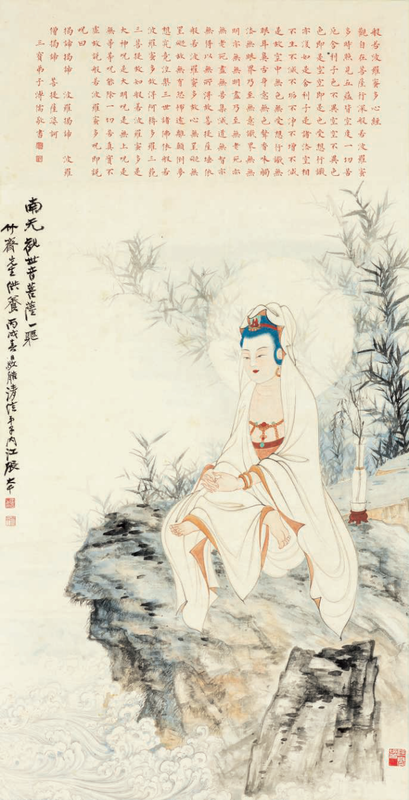
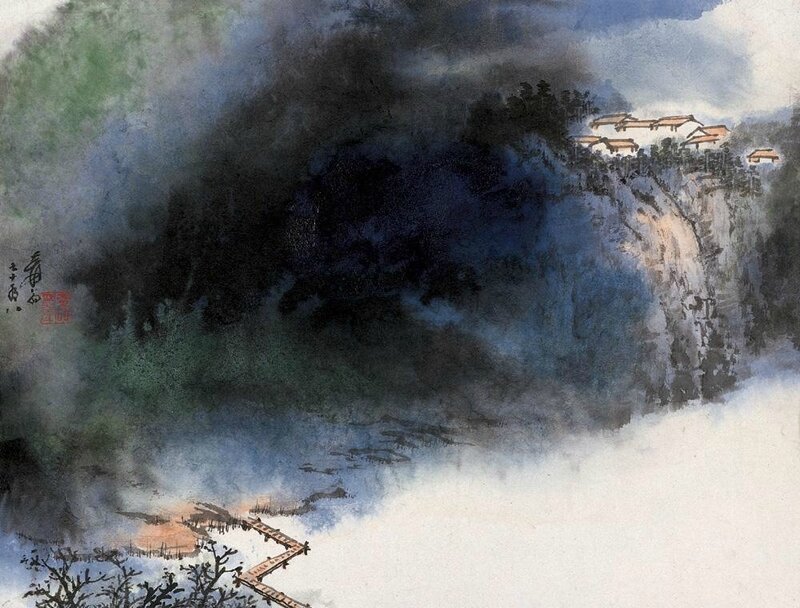
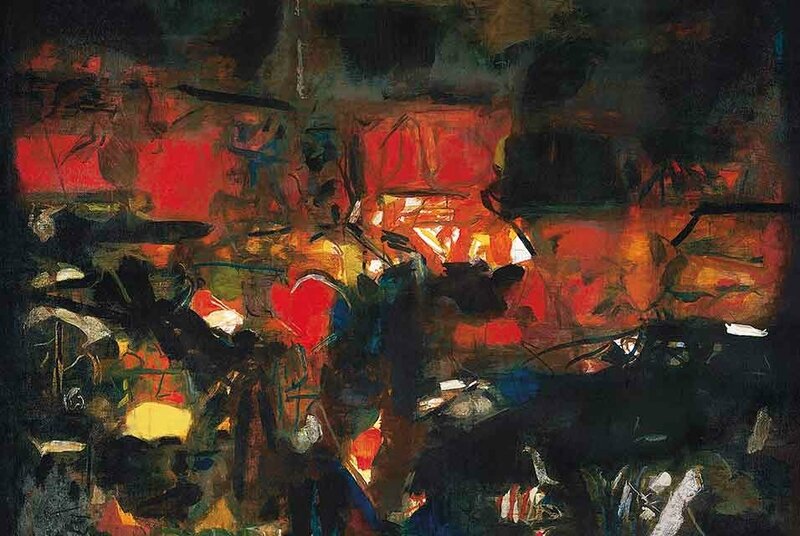
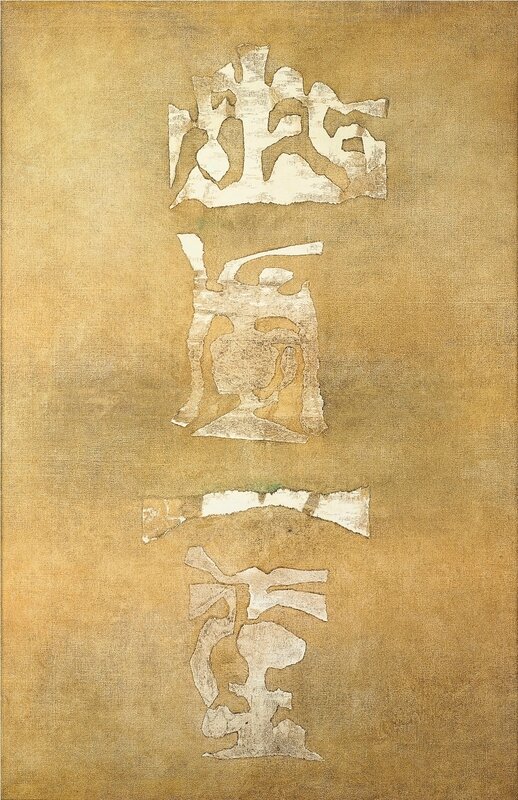
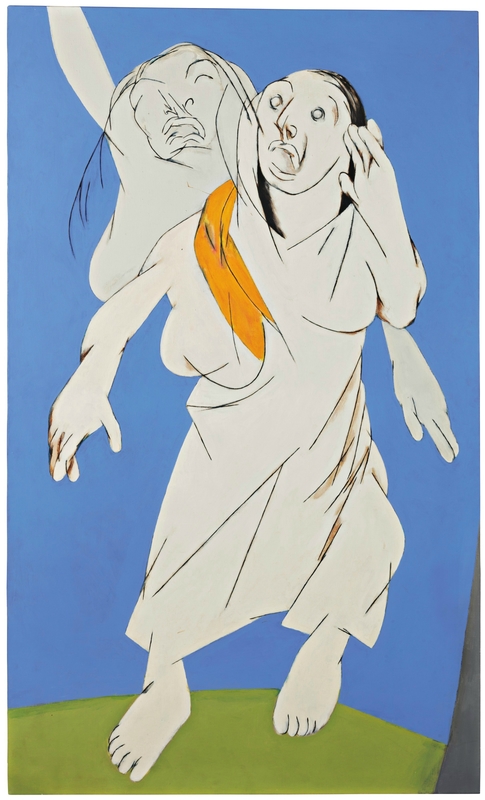



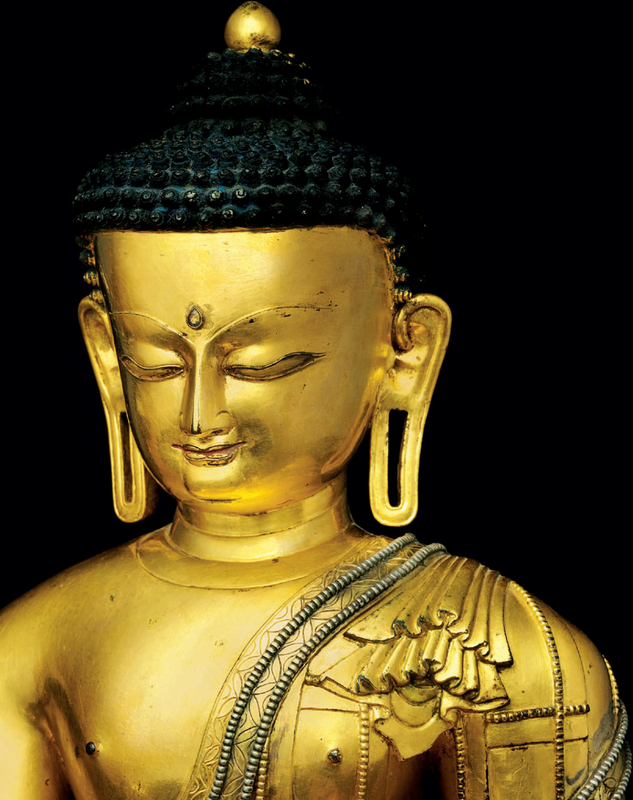
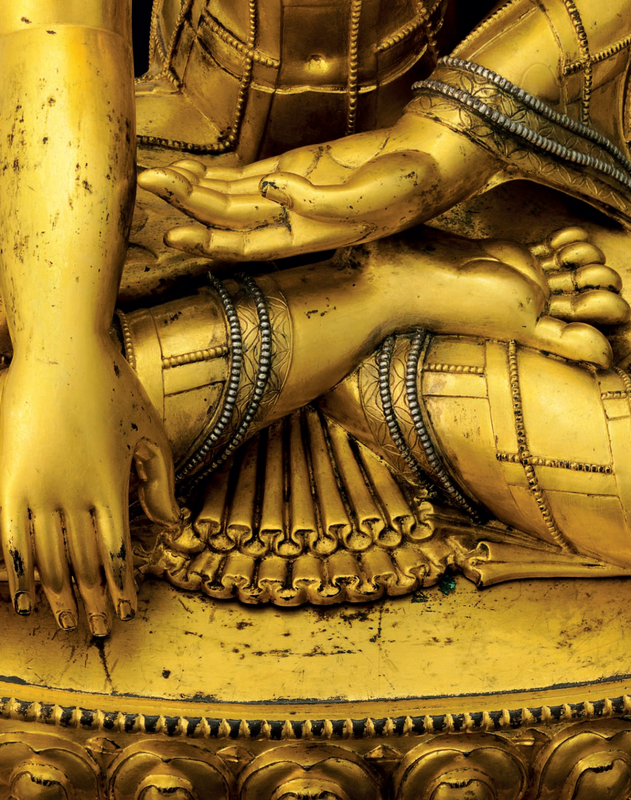
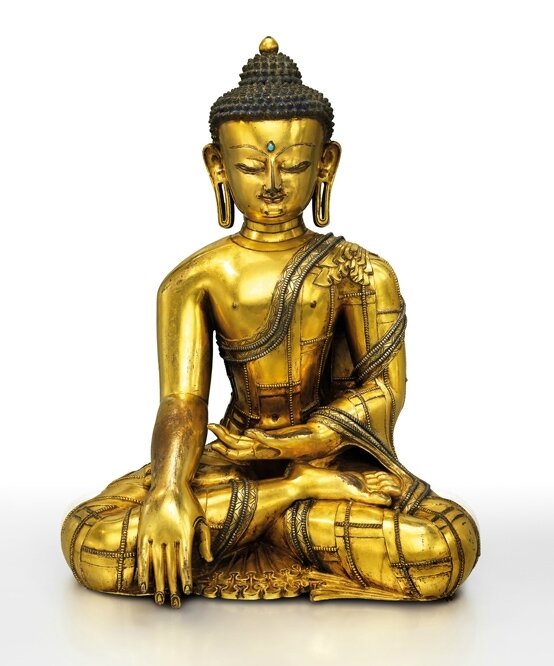

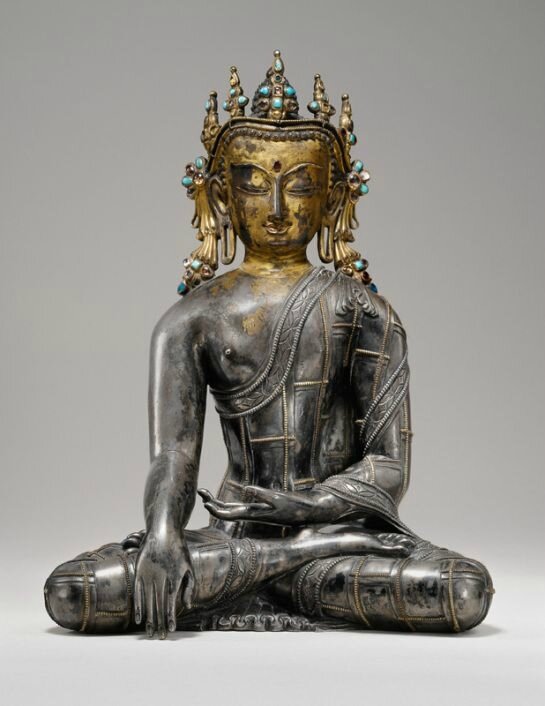

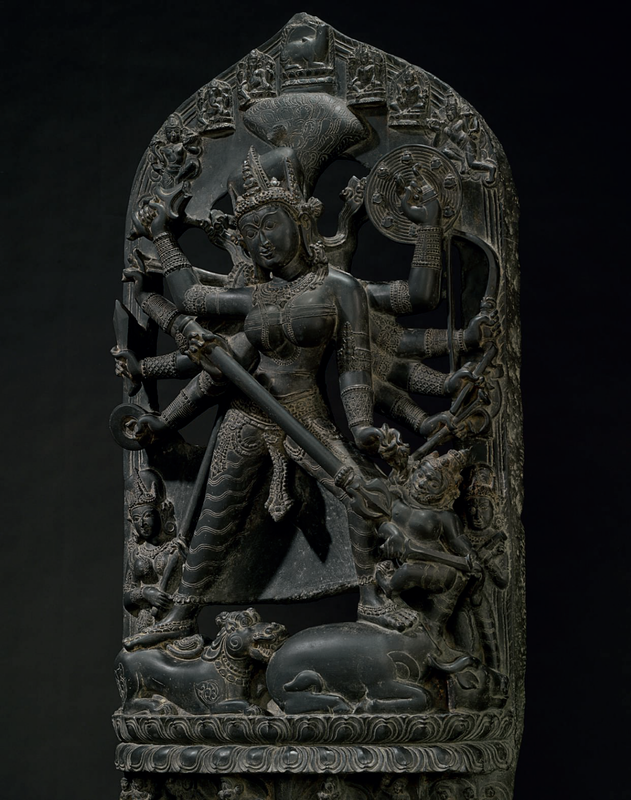





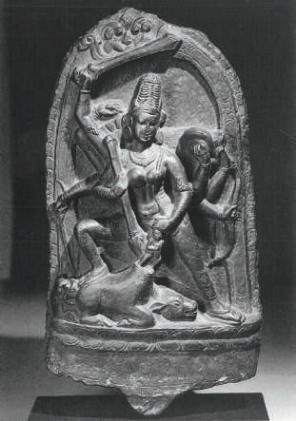
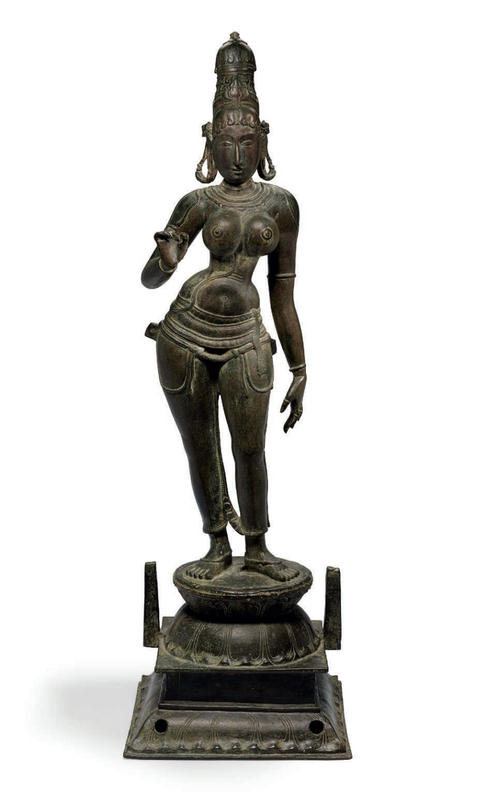



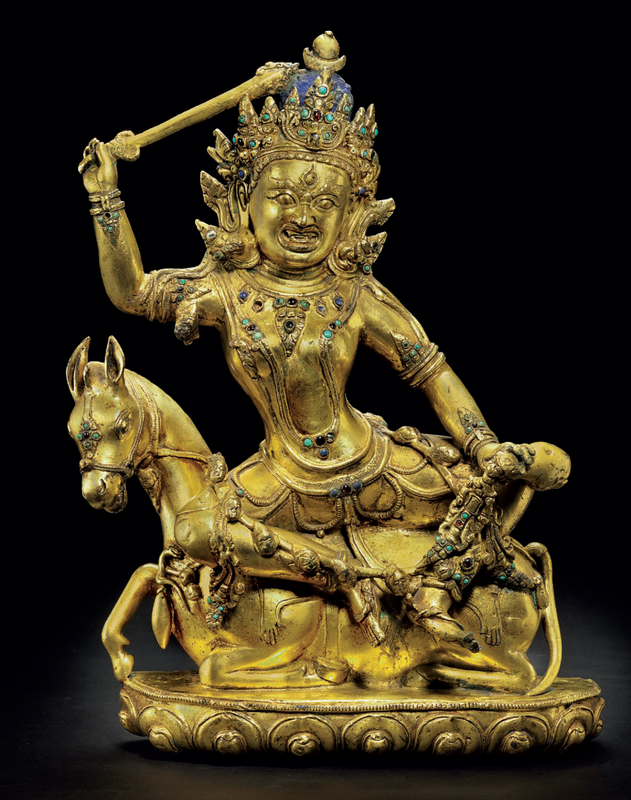





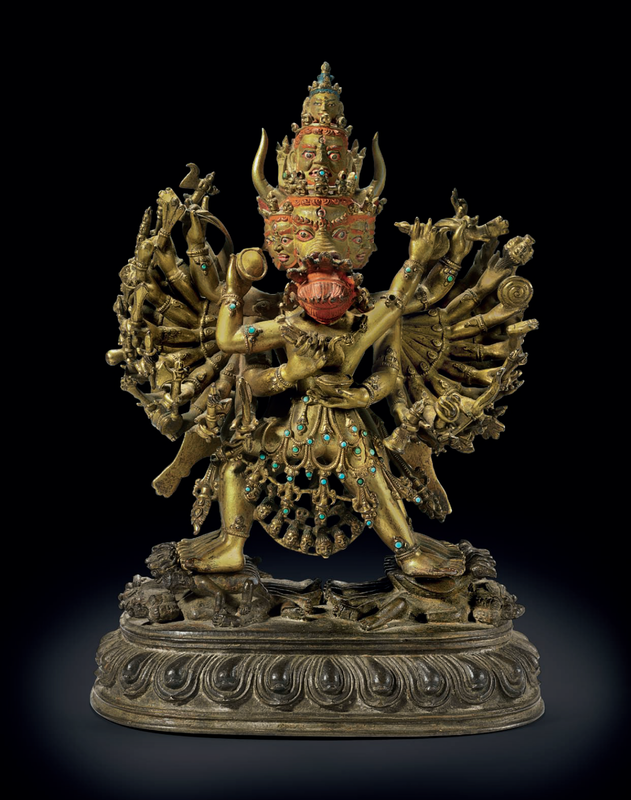


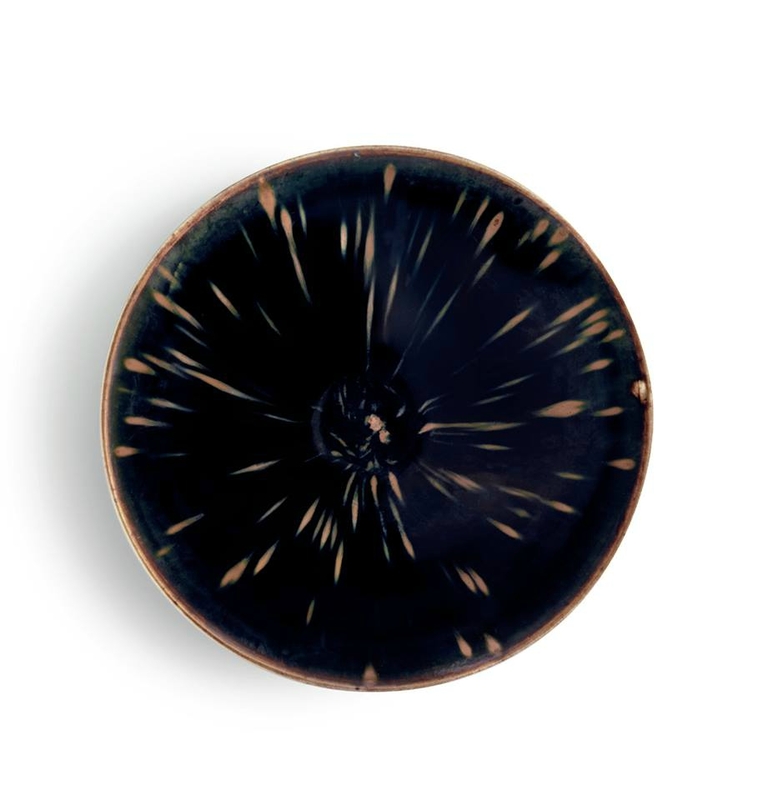

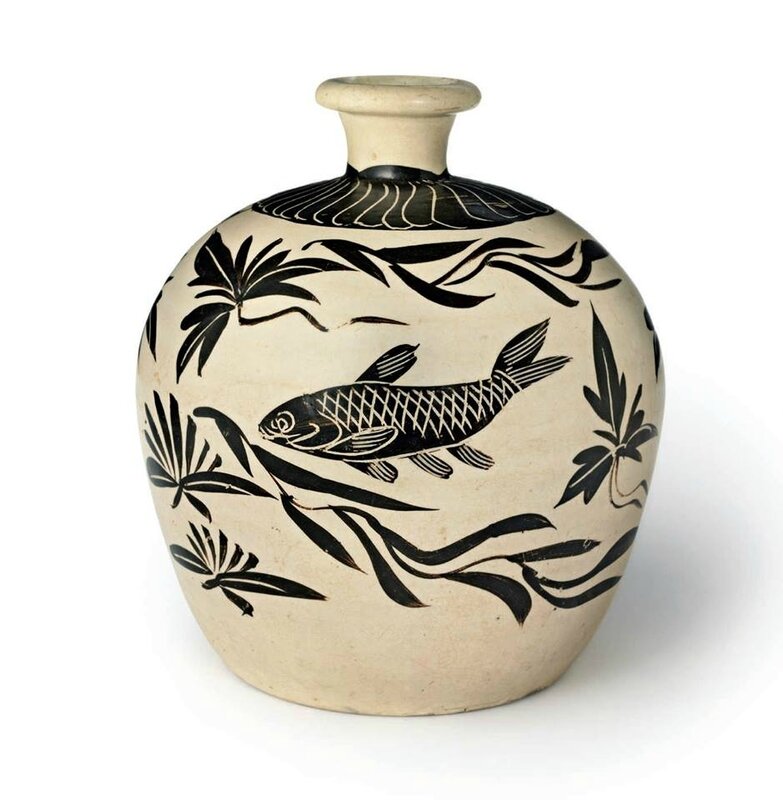

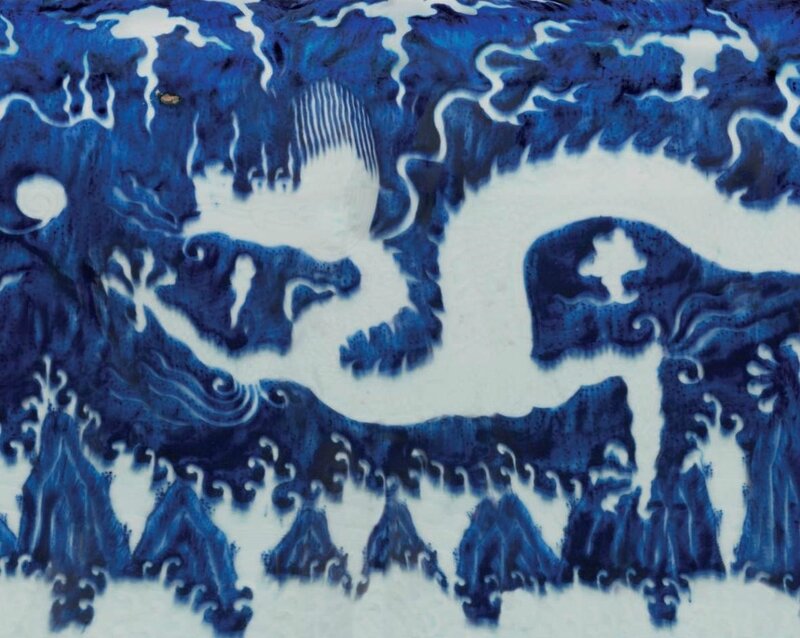





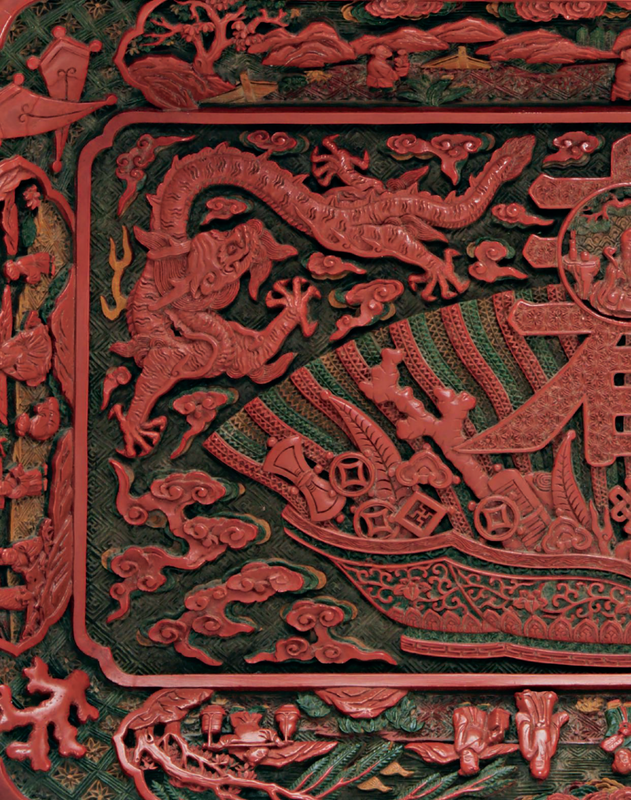


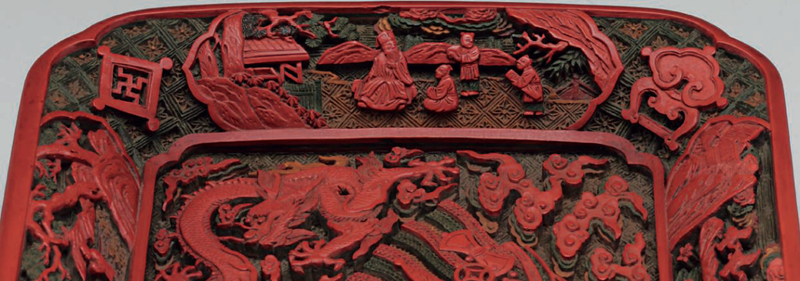

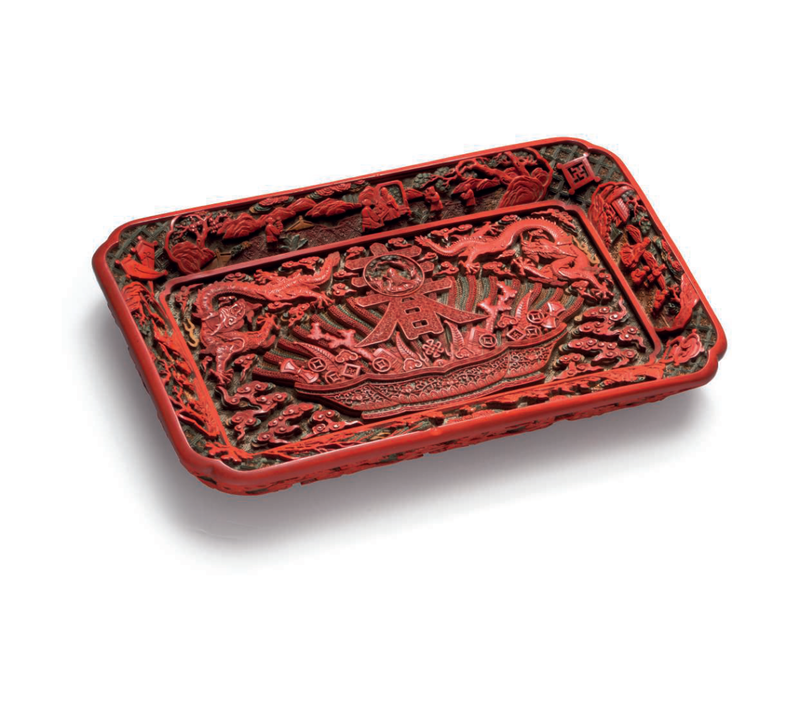

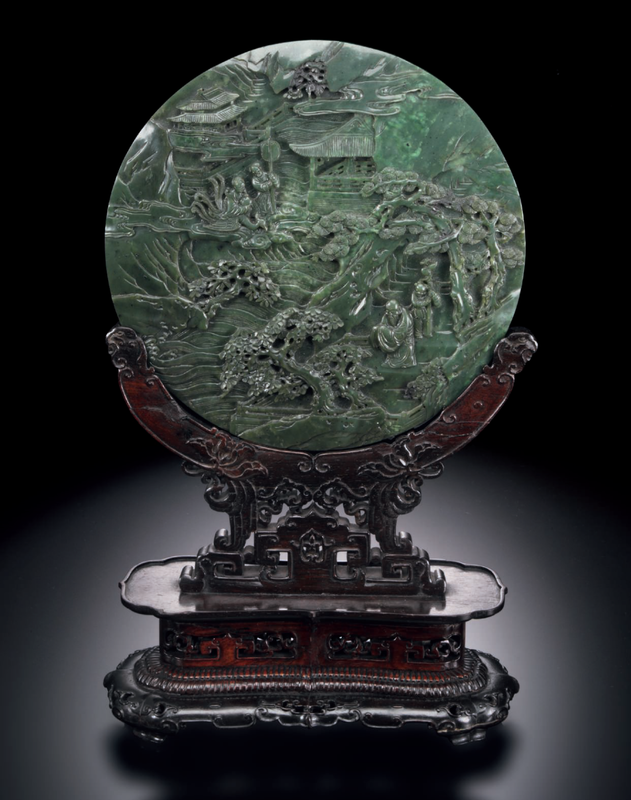

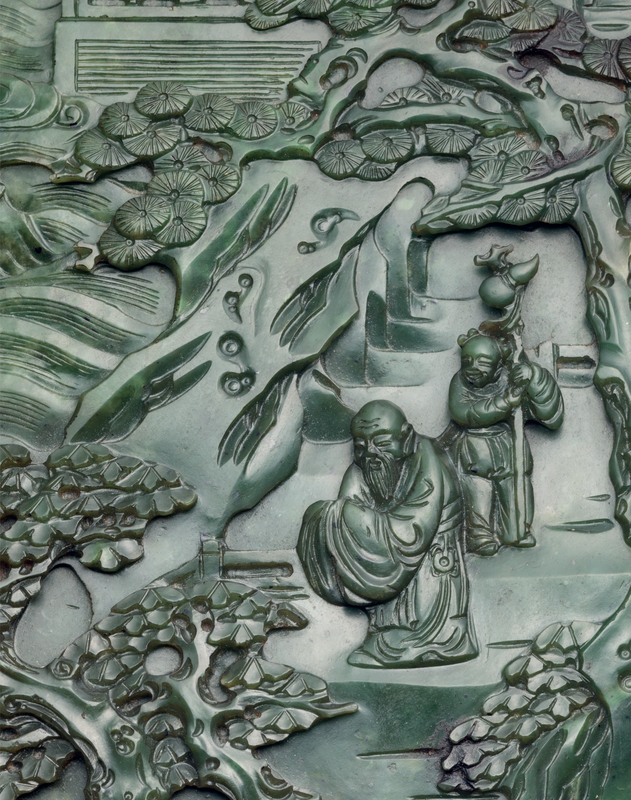
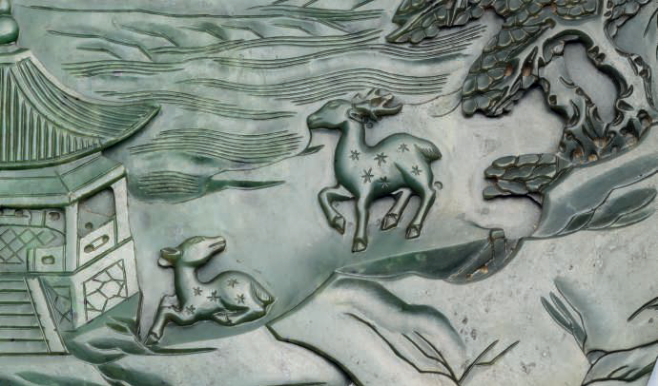






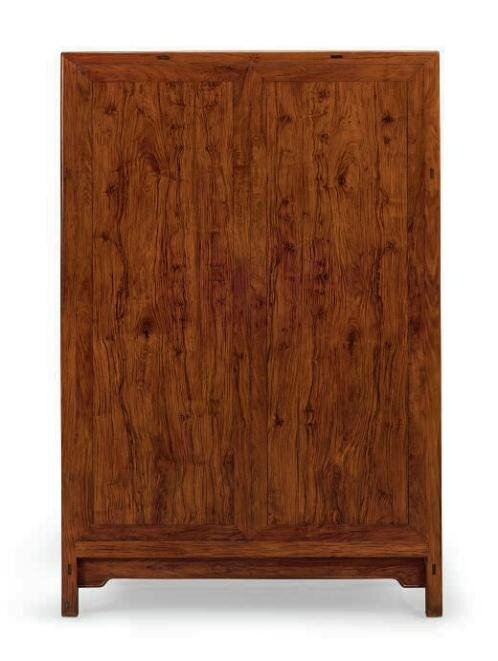



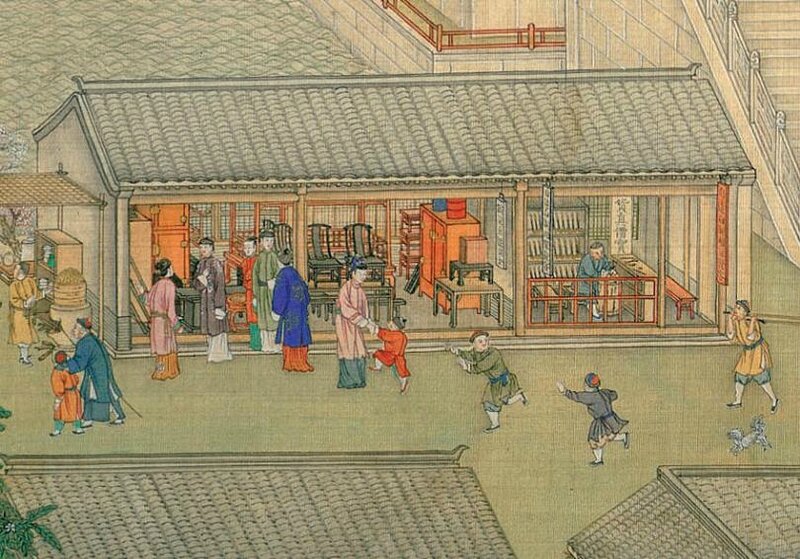




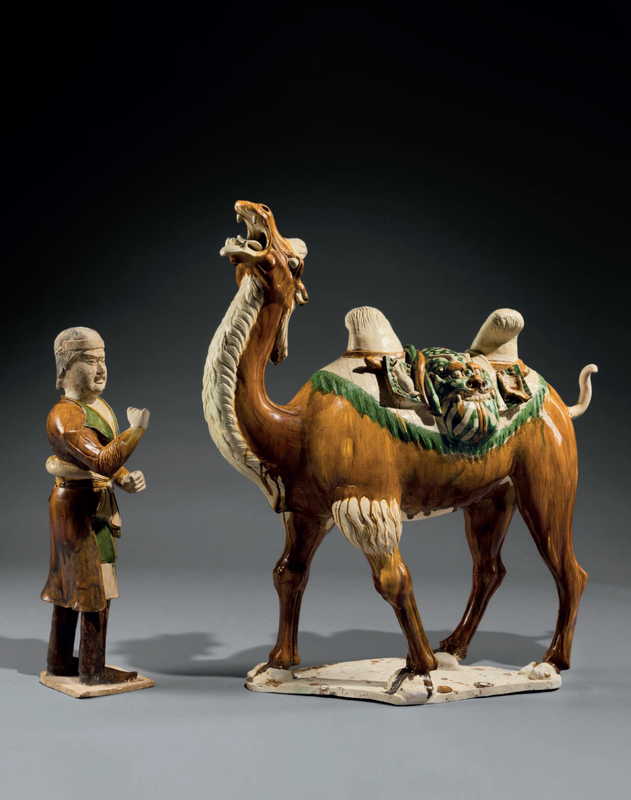




/http%3A%2F%2Fstorage.canalblog.com%2F46%2F16%2F119589%2F122392028_o.jpg)
/http%3A%2F%2Fstorage.canalblog.com%2F50%2F43%2F119589%2F121067206_o.jpg)
/http%3A%2F%2Fstorage.canalblog.com%2F33%2F40%2F119589%2F96588931_o.jpg)
/http%3A%2F%2Fstorage.canalblog.com%2F19%2F81%2F577050%2F38116819_p.jpg)